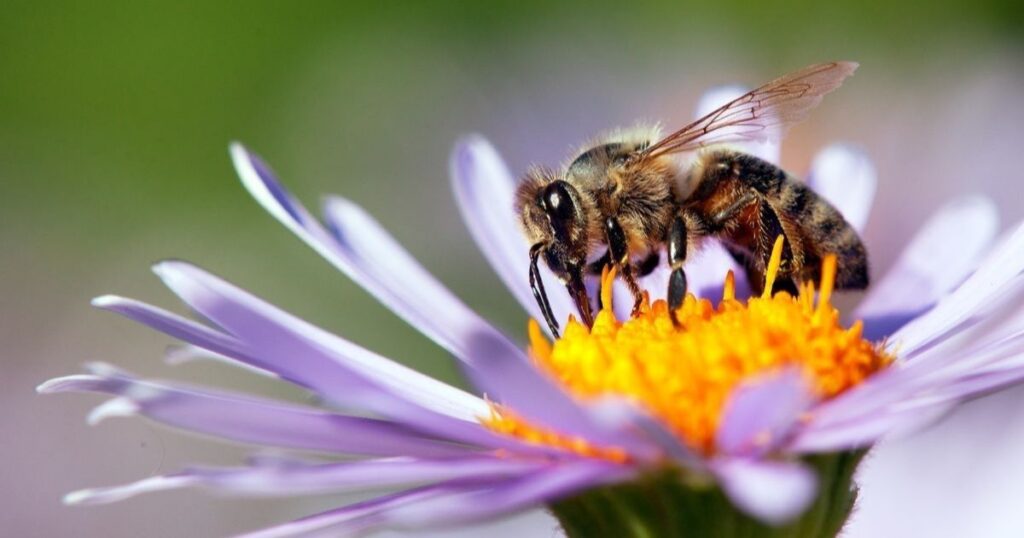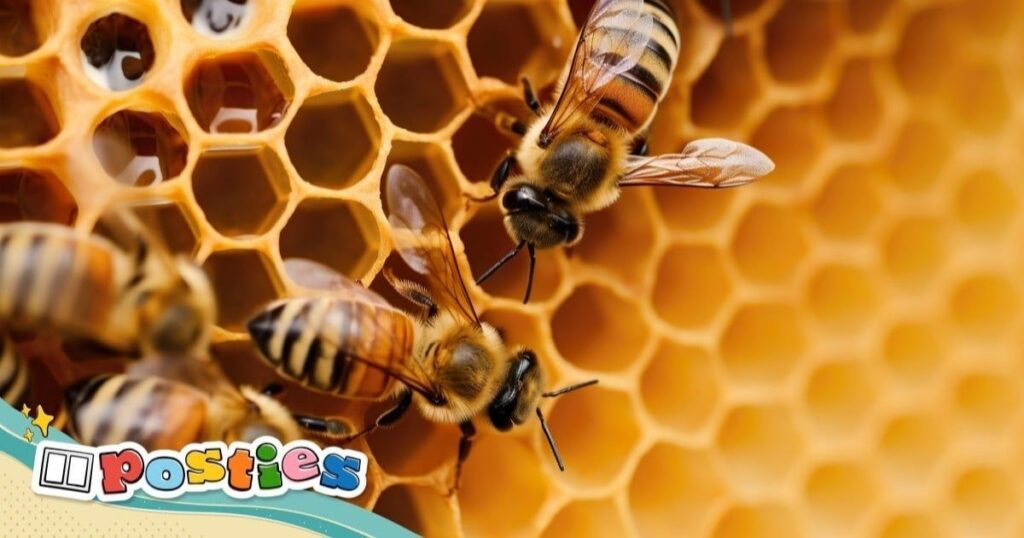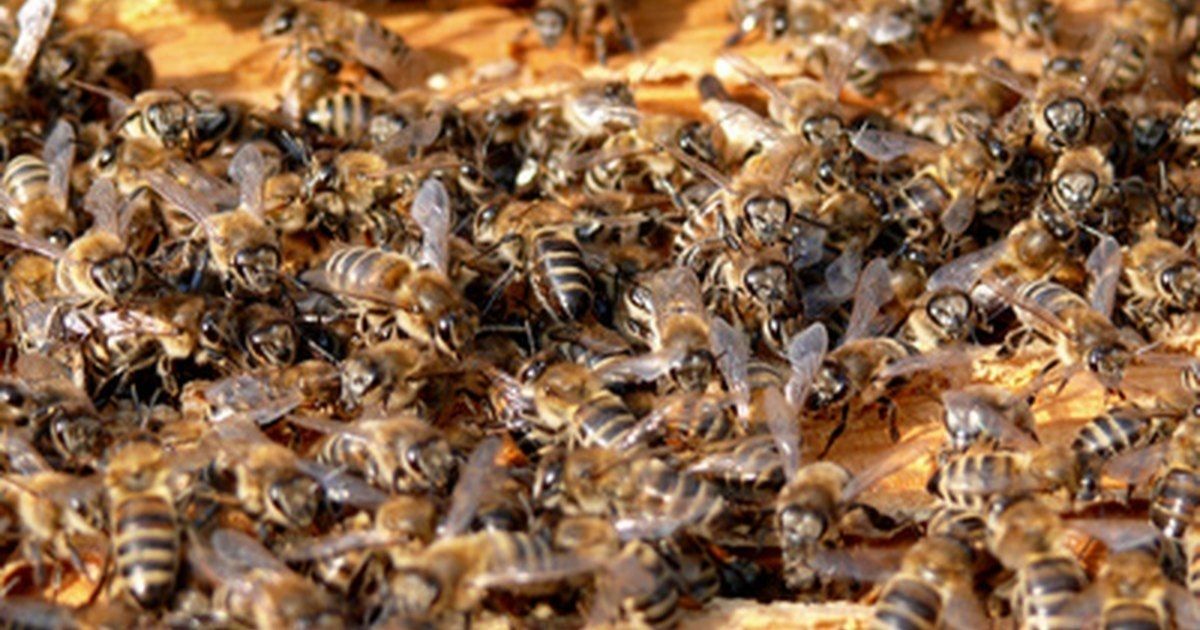Sweat bees, those small, metallic-hued insects that seem to appear out of nowhere on hot summer days, can be a nuisance for many outdoor enthusiasts. While they play a crucial role in our ecosystem, their attraction to human perspiration can make them unwelcome guests during our outdoor activities. In this comprehensive guide, we’ll explore everything you need to know about sweat bees, including effective methods to get rid of them and maintain a comfortable outdoor environment.
What Are Sweat Bees?
Sweat bees, scientifically known as members of the Halictidae family, are fascinating creatures that often go unnoticed due to their small size. These bees typically measure between 3-10mm in length, making them one of the smaller bee species. Despite their diminutive stature, sweat bees are easily recognizable thanks to their distinctive metallic sheen, which can range from vibrant greens and blues to stunning purples.
The Halictidae family is one of the largest and most diverse bee families, with over 4,000 species worldwide. These bees are found on every continent except Antarctica, showcasing their adaptability to various environments. Their name, “sweat bees,” comes from their peculiar attraction to human perspiration, which they seek out for its salt content.
Sweat bees are primarily herbivores, feeding on nectar and pollen from a wide variety of flowers. This dietary preference makes them important pollinators in many ecosystems. Unlike some of their more aggressive cousins, such as carpenter bees, sweat bees are generally docile and play a crucial role in maintaining biodiversity by facilitating plant reproduction.
One of the most striking features of sweat bees is their metallic sheen. This iridescent quality is not just for show; it serves several purposes in their survival and mating rituals. The reflective surface can help regulate body temperature and may also play a role in attracting mates.
Where Do Sweat Bees Live?

Understanding the habitat preferences of sweat bees is crucial for both appreciating their ecological role and managing their presence in areas where they might become a nuisance. Sweat bees are highly adaptable and can be found in a variety of environments, each offering the resources they need to thrive.
- Gardens and Flowerbeds: Sweatbees are frequent visitors to gardens, especially those with a diverse array of flowering plants. These areas provide ample sources of nectar and pollen, which are essential for their diet.
- Meadows and Fields: Open areas with wildflowers are prime habitats for sweat bees. The abundance of different plant species in these environments offers a rich food source throughout the growing season.
- Woodlands and Forest Edges: Many sweat bee species prefer the dappled sunlight and varied vegetation found at the edges of wooded areas. These transitional zones often have a mix of flowering plants that attract sweat bees.
- Urban and Suburban Areas: Sweat bees have adapted well to human-altered landscapes. Parks, residential gardens, and even potted plants on balconies can provide suitable habitats for these resilient insects.
- Coastal Regions: Some species of sweat bees are specially adapted to coastal environments, where they can tolerate higher salt levels in the soil and air.
When it comes to nesting, sweat bees exhibit diverse behaviors:
- Ground-Nesting: Many sweat bee species create their nests in the soil. They prefer well-drained areas with sparse vegetation, often on sloping ground or in small clearings.
- Wood-Nesting: Some species bore into soft, decaying wood to create their nests, although this is less common than ground-nesting.
- Social Structure: While many sweat bees are solitary, some species form small colonies. These social structures can range from a few individuals to more complex hierarchies with a queen and worker bees.
Understanding where sweat bees live and nest is crucial for effective management. By recognizing their preferred habitats, you can better predict where you might encounter them and take appropriate measures to coexist or, if necessary, deter them from specific areas.
Also read this post:we’ll explore the five most common wasps found in Florida,
How to Get Rid of Sweat Bees?
While sweat bees play a vital role in our ecosystem, there may be times when their presence becomes problematic, especially in areas of high human activity. Here are several effective methods to manage sweat bee populations and reduce their impact on your outdoor spaces:
Remove Standing Water Sources:
Sweat bees, like many insects, require water for survival. Eliminating sources of standing water can make your property less attractive to them. This includes:
- Emptying birdbaths regularly
- Fixing leaky faucets or pipes
- Ensuring proper drainage in your yard
- Removing any containers that collect rainwater
Seal Cracks and Crevices:
Sweat bees can enter buildings through small openings. Inspect your home’s exterior and seal any potential entry points:
- Use caulk to fill gaps around windows and doors
- Repair any damaged siding or brickwork
- Check for and seal openings around utility lines
Plant Natural Repellents:
Certain plants act as natural deterrents to sweat bees. Consider adding these to your garden:
- Marigolds: Their strong scent can repel various insects, including sweat bees
- Basil: Another aromatic herb that sweat bees tend to avoid
- Mint: The strong menthol scent can deter sweat bees and other pests
- Citronella: Known for repelling mosquitoes, it can also help with sweat bees
Use Natural Deterrents:
Several household items can be used to create natural repellents:
- Vinegar Solution: Mix equal parts water and apple cider vinegar in a spray bottle. Apply to areas where sweatbees are common.
- Essential Oils: Peppermint, eucalyptus, or tea tree oil mixed with water can create an effective spray repellent.
- Cucumber Peels: Placing cucumber peels in areas frequented by sweat bees can deter them due to the acidic properties of cucumbers.
Maintain Your Lawn:
A well-maintained lawn can reduce sweat bee activity:
- Regular mowing prevents the growth of flowering weeds that attract bees
- Remove fallen fruit promptly, as fermenting fruit can attract sweat bees
- Consider using ground covers in areas where grass doesn’t grow well to reduce bare soil where bees might nest
Use Bee Repellents:
Commercial bee repellents are available and can be effective when used according to the manufacturer’s instructions. Look for products specifically designed for bees and avoid those that might harm beneficial insects.
Create Barriers:
In areas where you frequently encounter sweat bees, consider creating physical barriers:
- Use fine mesh screens on windows and doors
- Set up fan systems in outdoor living areas to create air movement that bees find difficult to navigate
Timing Your Outdoor Activities:
Sweat bees are most active during the warmest parts of the day. Plan outdoor activities for early morning or late afternoon when possible to minimize encounters.
Personal Protection:
When in areas with high sweat bee activity, consider:
- Wearing light-colored clothing (sweat bees are attracted to dark colors)
- Using insect repellents containing DEET or picaridin
- Avoiding strong perfumes or scented products that might attract bees
Encourage Natural Predators:
Attract birds and other natural predators of sweat bees to your yard:
- Install birdhouses and feeders
- Create a diverse garden ecosystem that supports a variety of wildlife
Remember, while these methods can help reduce sweat bee populations, it’s important to approach control measures with a balanced perspective. Sweat bees are beneficial insects, and complete eradication is neither possible nor desirable for the health of our ecosystems.
Do Sweat Bees Eat Your Sweat?

Contrary to popular belief, sweat bees do not eat human sweat. The relationship between sweat bees and human perspiration is more complex and fascinating than simple consumption. Let’s delve into the true nature of this interaction:
Attraction to Salt:
The primary reason sweat bees are attracted to human sweat is its high salt content. Like many other animals, bees require sodium for various physiological processes. Human sweat provides an easily accessible source of this essential mineral.
Nectar and Pollen Diet:
Sweat bees, like other bees, are primarily herbivores. Their main diet consists of nectar and pollen from flowers. Nectar provides carbohydrates for energy, while pollen supplies proteins and other nutrients essential for their growth and reproduction.
Supplementary Nutrition:
The salts and minerals in sweat serve as a supplement to their regular diet. This additional nutrition can be particularly important during times when floral resources are scarce.
Water Source:
In some cases, especially in hot and dry conditions, sweat bees may be attracted to human sweat as a source of moisture. This behavior is more about hydration than nutrition.
Behavioral Adaptation:
The attraction to sweat is an evolutionary adaptation that allows these bees to exploit an additional resource in their environment. It’s a behavior that has likely developed over thousands of years.
Male vs. Female Behavior:
Interestingly, it’s primarily female sweat bees that are attracted to human sweat. Males typically focus on flowers for their nutritional needs.
No Harm to Humans:
While the presence of sweat bees can be annoying, their interest in human sweat does not pose any health risks. They are not transmitting diseases or causing any physical harm through this behavior.
Seasonal Variations:
The attraction to sweat may be more pronounced during certain times of the year, particularly when floral resources are less abundant or during the peak of the breeding season when nutritional needs are higher.
Individual Preferences:
Not all sweat bees are equally attracted to human sweat. Different species and even individuals within a species may show varying levels of interest.
Comparison to Other Insects:
While sweat bees are known for this behavior, they are not the only insects attracted to human sweat. Some butterflies and other bee species also exhibit similar tendencies.
Understanding that sweat bees are not eating your sweat, but rather seeking out specific components within it, can help in developing more effective and targeted strategies for managing their presence. It also highlights the complex relationships between insects and their environment, showcasing the remarkable adaptations that have evolved in the natural world.
Do Sweat Bees Sting?

The question of whether sweat bees sting is a common concern for many people who encounter these small, metallic insects. To address this, it’s important to understand the nature of sweat bees and their behavior:
Capability to Sting:
Yes, female sweat bees are capable of stinging. They possess a stinger, which is a modified ovipositor (egg-laying organ). Male sweat bees, like all male bees, do not have stingers.
Non-Aggressive Nature:
Despite their ability to sting, sweat bees are generally not aggressive. They rarely sting humans unless provoked or threatened. Most encounters with sweat bees are harmless, with the bees simply landing on the skin to collect salt from sweat.
Defensive Mechanism:
Stinging is primarily a defensive mechanism for sweatbees. They use it as a last resort when they feel their life is in danger, such as being squished or aggressively swatted.
Sting Potency:
Compared to other bees, such as honey bees or wasps, the sting of a sweat bee is generally considered mild. On the Schmidt Sting Pain Index, which rates the pain of various insect stings, sweat bees rank relatively low.
Reaction to Stings:
For most people, a sweat bee sting results in minor pain and localized swelling. The discomfort typically subsides within a few hours. However, as with any insect sting, individual reactions can vary.
Allergic Reactions:
While rare, some individuals may be allergic to sweat bee stings. In such cases, even a mild sting can cause a severe allergic reaction (anaphylaxis). People with known bee allergies should exercise caution and carry appropriate medication.
Multiple Stings:
Unlike honey bees, which lose their stinger after stinging once, sweat bees can sting multiple times. However, multiple stings from sweat bees are extremely rare due to their non-aggressive nature.
Prevention:
To avoid stings, it’s best not to swat at or crush sweat bees when they land on you. Gently brushing them off or waiting for them to fly away on their own is usually sufficient.
Comparison to Other Bees:
When comparing sweat bees to other common bees like honey bees or carpenter bees, sweat bees are generally considered less of a stinging threat due to their smaller size and milder venom.
Ecological Importance:
It’s worth noting that while the possibility of stings exists, the ecological benefits of sweat bees far outweigh this minor risk. They are important pollinators in many ecosystems.
Understanding the stinging behavior of sweat bees can help alleviate fears and promote a more harmonious coexistence with these beneficial insects. By recognizing that they are not inherently aggressive and that stings are rare, we can appreciate their presence in our environment while taking simple precautions to avoid unwanted interactions.
Other Recommended Maintenance
While managing sweat bees is important, it’s also crucial to consider other aspects of pest control and property maintenance. Here are some additional areas to focus on:
Carpenter Bee Control:
Unlike sweat bees, carpenter bees can cause structural damage to wooden structures. They bore into wood to create nests, potentially compromising the integrity of buildings. Signs of carpenter bee infestation include:
- Small, perfectly round holes in wooden surfaces
- Sawdust piles beneath these holes
- Buzzing sounds from within wooden structures
To manage carpenter bees:
- Regularly paint or varnish exposed wood surfaces
- Fill existing holes with steel wool, caulk, or wood putty
- Consider using carpenter bee traps
- For severe infestations, consult a professional pest control service
Mosquito Management:
While mosquitoes are attracted to light, they’re primarily drawn to carbon dioxide and body heat. To reduce mosquito populations:
- Eliminate standing water sources where mosquitoes breed
- Use mosquito-repelling plants like citronella, marigolds, or lavender
- Install or repair window and door screens
- Consider using mosquito traps or professional mosquito control services
Whitefly Control:
Whiteflies are small, winged insects that feed on plant sap and can damage garden plants. They don’t bite humans but can be a nuisance. To manage whiteflies:
- Regularly inspect plants for signs of infestation
- Use insecticidal soaps or neem oil for control
- Introduce natural predators like ladybugs
- Remove heavily infested plants to prevent spread
General Lawn and Garden Maintenance:
- Regular mowing and trimming to discourage pest habitation
- Proper watering practices to avoid creating breeding grounds for insects
- Pruning trees and shrubs to improve air circulation and reduce pest-friendly environments
Home Exterior Maintenance:
- Regular inspections for cracks, gaps, or holes that could allow pests entry
- Maintaining clean gutters to prevent water accumulation
- Keeping firewood and organic debris away from the house
Indoor Pest Prevention:
- Regular cleaning to remove food sources for pests
- Proper food storage in airtight containers
- Addressing moisture issues like leaky pipes or damp basements
By addressing these various aspects of property maintenance, you create a less hospitable environment for a wide range of pests, not just sweatbees. This comprehensive approach to pest management and property care ensures a healthier, more comfortable living space both indoors and outdoors.
When Do I Call a Professional?
While many sweat bee situations can be managed with DIY methods, there are times when professional intervention becomes necessary. Knowing when to call in experts can save time, ensure safety, and provide more effective long-term solutions. Here are scenarios where professional pest control services should be considered:
Large Infestations:
If you notice a significant increase in sweat bee activity or discover large nesting sites on your property, it may indicate a severe infestation. Professionals have the tools and knowledge to handle large-scale bee problems safely and effectively.
Recurring Problems:
If sweat bees continue to be a persistent issue despite your best efforts at control, it’s time to consult experts. They can identify underlying causes and implement more comprehensive solutions.
Difficulty Locating Nests:
Sweat bees often nest in hard-to-reach or hidden areas. If you suspect nests but can’t locate them, professionals can conduct thorough inspections using specialized equipment.
Risk of Structural Damage:
While sweat bees themselves don’t cause structural damage, their presence might indicate vulnerabilities in your home’s exterior. Professionals can identify and address these issues, preventing future infestations of various pests.
Allergies or Health Concerns:
If you or your family members have bee allergies or other health concerns, professional intervention ensures the safe removal of sweat bees without risking allergic reactions.
Multiple Pest Issues:
Often, sweat bee problems coincide with other pest issues. Professional pest control services can provide comprehensive solutions addressing multiple pest concerns simultaneously.
Need for Identification:
If you’re unsure whether you’re dealing with sweat bees or another type of bee or insect, professionals can accurately identify the species and tailor their approach accordingly.
Environmentally Sensitive Areas:
If your property includes protected habitats or you’re concerned about the environmental impact of pest control methods, professionals can offer eco-friendly solutions that balance pest management with conservation.
Legal or Regulatory Requirements:
In some areas, there may be legal restrictions on how certain insects, including bees, can be removed or controlled. Professionals are aware of these regulations and can ensure compliance.
Time and Resource Constraints:
If you lack the time, equipment, or expertise to effectively manage a sweat bee problem, professional services can provide efficient and thorough solutions.
Prevention and Future Planning:
Pest control professionals don’t just solve current problems; they can also provide valuable advice on preventing future infestations and implementing long-term pest management strategies.
Safety Concerns:
If nests are located in dangerous areas (e.g., high up on buildings or near power lines), professional intervention ensures safe removal without personal risk.
When calling a professional, be prepared to provide the following information:
- The type of insects you’re dealing with (if known)
- The extent of the problem (how many bees, where they’re concentrated)
- Any control methods you’ve already tried
- Specific concerns (e.g., allergies, structural issues)
Remember, professional pest inspection services, like those offered by Inside and Out Pest Services in Jacksonville, FL, and surrounding areas, can provide comprehensive assessments of your pest situation. They can identify not just sweat bee issues but also potential problems with other pests like carpenter bees, mosquitoes, or white flies.
Conclusion
Sweat bees, members of the Halictidae family, are fascinating creatures that play a crucial role in our ecosystem through pollination. While their attraction to human sweat can make them a nuisance during outdoor activities, understanding their behavior and habitat preferences is key to managing their presence effectively.
We’ve explored various aspects of sweat bees, from their metallic sheen and small size to their preferred living environments in gardens, meadows, and woodlands. Contrary to popular belief, these bees don’t eat human sweat but are attracted to its salt content as a nutritional supplement.
When it comes to getting rid of sweatbees, a multi-faceted approach is often the most effective. This includes:
- Removing sources of standing water
- Sealing cracks and crevices in buildings
- Planting natural repellents like marigolds and basil
- Using natural deterrents such as vinegar solutions or essential oils
- Maintaining a well-kept lawn and garden
It’s important to remember that while sweat bees can sting, they are generally non-aggressive and will only do so when threatened. Their stings are typically mild compared to other bee species, though individuals with allergies should exercise caution.
In addition to managing sweat bees, we’ve discussed the importance of broader pest control and property maintenance. This includes addressing issues with carpenter bees, mosquitoes, and white flies, as well as general lawn care and home exterior maintenance.
Knowing when to call in professional help is crucial. Large infestations, recurring problems, difficulty locating nests, or concerns about allergies and safety are all valid reasons to seek expert assistance. Professional pest control services can provide comprehensive solutions, ensure compliance with local regulations, and offer strategies for long-term pest management.
As we coexist with these important pollinators, it’s vital to strike a balance between managing their presence in our immediate environment and respecting their role in the broader ecosystem. By employing thoughtful, environmentally conscious methods of control, we can create comfortable outdoor spaces while still supporting the biodiversity that sweat bees contribute to.
Remember, if you’re facing persistent pest issues or need a thorough assessment of your property’s pest situation, don’t hesitate to reach out to professional services. They can provide tailored solutions and peace of mind, ensuring that your home remains a safe and comfortable environment year-round.
FAQs
How do you get rid of sweat bees fast?
To get rid of sweat bees quickly, you can use a mixture of water and dish soap in a spray bottle, applying it directly to the bees. Alternatively, setting up fans outdoors can create air movement that sweat bees find difficult to navigate, providing immediate relief.
What brings sweat bees?
Sweat bees are primarily attracted to human perspiration due to its salt content. They are also drawn to areas with abundant flowering plants, as they feed on nectar and pollen.
Do sweat bees sting people?
Female sweat bees can stump people, but they rarely do so unless provoked or threatened. Their stings are generally considered mild compared to other bee species, though individuals with bee allergies should still exercise caution.
Why are there so many sweat bees around my house?
An abundance of sweat bees around your house could indicate the presence of favorable nesting conditions, such as bare soil patches or decaying wood. It may also suggest that your property has a variety of flowering plants that attract these bees for feeding.











